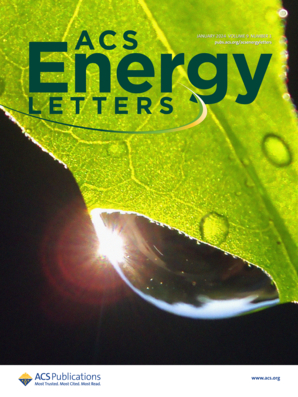Ion-Conducting Membranes for Long-Duration Energy Storage
IF 19.3
1区 材料科学
Q1 CHEMISTRY, PHYSICAL
引用次数: 0
Abstract
Redox flow batteries (RFBs) have emerged as a promising candidate for large-scale energy storage, particularly in the integration of intermittent renewable energy sources and enhancement of grid stability. As one of the critical components of RFBs, the ion-conducting membrane facilitates ion conduction and prevents redox-active species from crossing over, thereby significantly influencing the efficiencies and lifespan of RFBs. Designing highly selective membranes based on different transport behaviors of ions in ion transport channels benefits redox flow batteries for long-duration grid-scale energy storage applications. Herein, we introduce the ion transport mechanism, discuss design strategies of highly selective ion-conducting membranes, and present the challenges and perspectives for their application in redox flow battery applications. This review provides insights into the design of a highly selective ion-conducting membrane tailored for long-duration grid-scale redox flow battery applications.

用于长时间储能的离子导电膜
氧化还原液流电池(rfb)已成为大规模储能的一个有前途的候选者,特别是在间歇性可再生能源的整合和增强电网稳定性方面。离子导电膜作为rfb的关键组成部分之一,促进了离子的传导,阻止了氧化还原活性物质的交叉,从而显著影响了rfb的效率和寿命。基于离子在离子传输通道中的不同传输行为设计高选择性膜有助于氧化还原液流电池在长时间电网规模储能应用中的应用。在此,我们介绍了离子传输机制,讨论了高选择性离子导电膜的设计策略,并提出了其在氧化还原液流电池应用中的挑战和前景。这篇综述为为长时间电网级氧化还原液流电池应用量身定制的高选择性离子导电膜的设计提供了见解。
本文章由计算机程序翻译,如有差异,请以英文原文为准。
求助全文
约1分钟内获得全文
求助全文
来源期刊

ACS Energy Letters
Energy-Renewable Energy, Sustainability and the Environment
CiteScore
31.20
自引率
5.00%
发文量
469
审稿时长
1 months
期刊介绍:
ACS Energy Letters is a monthly journal that publishes papers reporting new scientific advances in energy research. The journal focuses on topics that are of interest to scientists working in the fundamental and applied sciences. Rapid publication is a central criterion for acceptance, and the journal is known for its quick publication times, with an average of 4-6 weeks from submission to web publication in As Soon As Publishable format.
ACS Energy Letters is ranked as the number one journal in the Web of Science Electrochemistry category. It also ranks within the top 10 journals for Physical Chemistry, Energy & Fuels, and Nanoscience & Nanotechnology.
The journal offers several types of articles, including Letters, Energy Express, Perspectives, Reviews, Editorials, Viewpoints and Energy Focus. Additionally, authors have the option to submit videos that summarize or support the information presented in a Perspective or Review article, which can be highlighted on the journal's website. ACS Energy Letters is abstracted and indexed in Chemical Abstracts Service/SciFinder, EBSCO-summon, PubMed, Web of Science, Scopus and Portico.
 求助内容:
求助内容: 应助结果提醒方式:
应助结果提醒方式:


